Text and photos by Natalie Dybisz aka Miss Aniela.
First I will describe how Ecology began (which was roughly in November 2010). For a while previous, I had wanted to bring environmental topics into my work, but did not know how to do so without feeling like I was forcing some undesirably didactic quality into my images. Instead, I waited until it felt right and instinctive. It began roughly at the time when I shot Free range (below). I was compelled to shoot in the atmospheric winter Kent landscape, along with a bin and some rubbish I’d brought along to anchor the desolate feel of an outdoor nude. Unusually, I also chose to openly display the brand name of the supermarket bag. Posing for my own picture, and not being able to see exactly what the pose looked like till afterwards, I was fascinated by the distortion of one of the shots in-camera. The strange hole in the curve of my neck and shoulder made the top of my body reminiscent of a hollow carcass. The final image I presented, along with the title I gave it, started to suggest a new, more topical level of dialogue than the fantasy realm evoked by a lot of my work up to then. The work to follow varied in tone, but overall it set the precedent for a new angle.
In continuing to act upon this new environmental inspiration, I listed some problematic aspects of our modern existence. For example, our overuse of plastic and packaging in general, imminent oil and water depletion, the littering of the landscape both on a personal and mass-industrial scale, the reliance of man on medicine and our drug-reliant medical system (the latter which has become my focal/‘favourite’ topic that I am always craving opportunities to express). Pictures like Midway by Chris Jordan spelled out the starkness of contamination of the planet and inspired me to want to present this kind of juxtaposition in my own portrait/nude tableaux.
I went on to casually gather unlikely props and materials, centred around waste, plastic, domestic objects and banal functional items. Some props were brought from home, such as rubbish, cling film or items of clothing. Some props I bought with purpose, such as an inflatable fish; others I found more haphazardly on my wanderings, such as traffic cones, decaying boats, an old broken television set. Gyre falls, below, was a pivotal image in my early days on this series where I started to see how nudity and waste could co-exist with an otherwise beautiful or graceful pose.
It was a tricky early-morning shoot that I felt clumsy doing, but the plastic took on a silvery, water-like appearance and in its symbolism, literally moved along the current of the series’ direction. This picture became a personal ‘benchmark’ to look back on at times when I became doubtful that nudity combined with waste was not an overly ambitious coalition. The contrapuntal placement of fashion models amongst flies and pig heads in the images of my longstanding inspiration Guy Bourdin has inspired me to believe that sensuality or beauty can sit alongside bizarreness and surrealism.
Because of the nature of shooting nudes outdoors, a lot of images have come to be shot with varying levels of collaboration from my partner Matthew. Heatstroke is one of our favourites: one of the most ‘collaborative’. I had posed nude in the cool damp ferns wearing all but a faux-fur coat; and later Matthew had shot long exposures of the car taillights through the mist. The moment in post-production happened when I was literally about to close down the set of images and conclude I hadn’t anything fruitful (at least, the ‘thing’ that I was looking for at the time evaded me).
Suddenly, joining the long exposure with the picture of me posing, a forest catastrophe was born: a strange darkening scene that spelled the end… where humanity sits on ravaged land holding onto its last lavish possession. As for most of my images, I thought long and hard about the title: it had to encompass the ambiguity of the strip of ‘fire’, whilst also inferring something more personal or even sensual in the way the woman poses, stripped of everything but the fur, which has in turn been symbolically ‘stripped’ from an animal. The title comes to acknowledge the ephemeral and yet essential quality of natural human desire, whilst at the same time envisioning the synthetic chemical heat sent through the heart of nature by the activities of humankind.
IV-TV moves onto referencing technology, in a forest scene where the posing figure is foetal, as if being birthed from the smoking, toxic waste of the empty television set, or escaping from it. At the time of making this image I was also aware of a symbolic reference to our rituals of childbirth and the tethering of woman to machine in the standard Western approach. The picture and title became suggestive of many threads of thought that come from the binding of humanity with technology. In The divorce, below, I was also inferring a link to medicine although this is on a more connotative level. There is a ‘disconnection’ between mind and body, but it is subtly noticed, just as it is overlooked or unacknowledged by so many of us that live by the particular (symptom-led, rather than cause-led) health system Western medicine dictates as normal.
An important aspect in my series is in welcoming ambiguity. There is not a definitive ‘it’ intended for everyone to ‘get’. The topical issues that inspire me are heartfelt and serious, but rather than submitting to some singular message that suggests how we should live, I started with a sense of futility of ‘doing anything’; the message was more about brooding, about inwardly reflecting, taking as much righteous ‘message’ from the image as you wish, in the manner of a private religion. Later however, I began to write words with my images to actively spur people into thinking about undesirable topics. Paltry, below, is an example of an image where I was inclined to comment on our tendency as a human race to ‘bury our heads in the sand’, and the body become a meat chop, a slab or a commodified object, rather than a living respiring instrument.
Throughout this series, I’ve experienced a desire to inject a little bit more preparation into my normal spontaneous approach, but still letting the ingredients come together organically whilst shooting (especially if I’m shooting myself, and can’t see and frame myself like I can with another model). In musing over ideas, I started trying to do some sketches, but found that I prefer to write down words. The selection and editing will then be another part of the journey and discovery. The titles I add to the images are a helpful way of both directing the viewer towards the meaning(s) I have in mind, but also remaining aloof (to acknowledge there is always more than one meaning) often with something mystical sounding, or words that could be a pun. Sometimes the idea for the title comes before the making of the image, as with While stocks last.
Above is Moored, shot in Dungeness, an inherently dystopian town on the coast of Kent. This is one of the few of the series so far that uses colour dramatically and vibrantly, but by way of juxtaposition with the morbid element. Otherwise, quite a few of my images in Ecology have become black and white pieces. There is something quieter and yet sometimes more powerful about black and white. There is something that often really suits the nude in the landscape, to be devoid of colour. I am clearly not alone in this thinking, as I am just one of many artists who have fallen into lust with the synergy between nude and monochrome. Somehow, by taking away the colour of a nude in nature, the connection to the banality of reality becomes severed. The image will sometimes remind me of analogue photography, as in Caesura and Denuded.
I have fond memories of shooting Denuded. Matthew and I had wandered Ashdown Forest and I was looking for a suitable fallen tree. We came across one that was half buried in the shrubbery and looked like an elephant’s trunk. I toppled backwards naked in the misty cool air, whilst we looked both ways for any hikers. It was as if time had stopped around us whilst we got the pictures done. It was Matthew who first suggested converting to black and white, and when I did so, I was compelled to keep it like that. The drama of the scene looked equally good in colour as in black and white: it is probably the only image yet that I display both in colour and in monochrome. Although the monochrome lacks the detail of the green moss and fern texture, the nude shape sits delicately, yet clearly outlined, like a faceless shored fish propped in a sea of leaves.
I use whatever I can find in the outdoor location to help make contrasts, concepts and shapes. It is finished, above, was shot with direct light from the sun that burst through the clouds for all but a moment (with help from Matthew, who concentrated on timing the light for the shots whilst I worked on pose). There is a palpable Biblical inspiration in the image and the title, as in the image below also, which was shot with another model in an apocalyptic-looking orchard. I like the idea of a curious dichotomy where Eden meets Gethsemane; the line is blurred between Eve and Jesus on the cross… the utopia of Genesis joins the dystopia of the book of Revelations.
Many of my images take on an organic surreal evolution post-shooting. My current favourite piece in Ecology would have to be The Fourth Soil, shot only this year (January 2012). It also takes on a Biblical allusion in the title, which references a parable. I posed for Matthew to shoot me standing at a distance amongst the trees with a 85mm f1.2 lens we were using for the first time. I was inspired to create black and white images but did not plan for surrealism. I never usually plan for surrealism, actually, because it has to feel ‘right’ to me, in front of my eyes, there has to be a magic that just arrives at the point of execution.
I was moving the figures around the forest scene afterwards on the computer and saw a synergy between the truncated thighs and the saplings. It was exciting to see, in particular, the way the trees ‘clicked’ with the bodies for the first, third and fourth figures. The other two were added to complete the line, and the composition took shape. The frame was left wide to keep in all of the texture and detail of the mystical forest scene, dwarfing the figures with its vastness. It was a picture quite like no other in my portfolio, and those moments I love as much as when I create images that ‘fit in.’ Another important aspect of a black and white image, for me, is that the image often becomes ‘illustrative’-looking. Whilst some of my favourite colour pieces may be reminiscent of (and inspired by) paintings, my black-and-white images are instead often like drawings. I find it reminiscent of illustrations in books from my childhood, particular in this case the illustrations I remember in books by C.S. Lewis. Even in the shots before the surreal stages, there was a quality to the scene that I loved for its intriguingly charcoal-like appearance.
Parasite, below, was forged from the same fire as The Fourth Soil, in that the shots were from the same shoot and place, a shot of the forest by itself, and one of me crouching in a field. As I transformed and toyed with the body, I liked the interesting resemblance it had to the anatomy of a flea when rotated stomach-down. It called to mind the interesting notion of ‘the human parasite’, and when I shared it online, I invited viewers to write their comments that I would select and add around the ‘flea’, in the manner of an anatomical chart.
In some images I feel that the nudity beckons a more sexual dialogue than others. The dialogue can be seen to nudge away from the environmental, back to the personal, but in another respect, the sexual and environmental can be taken together as a combined theme. I felt this way when I made The invasion (below). Alongside this image, instead of writing something to direct the viewer’s interpretation, I listed an outflow of suggested readings:
“an optical illusion; the opening of an ants’ nest; a solar system of encroaching planets; a cluster of spacecraft; a rash of infection; a synthetic/disrupted sexuality, attacking the body; a self-destruction that has been planted within; a dystopian Nyotaimori (‘body sushi’); a surreal form of censorship.”
In doing so, I allowed my imagination to explore how the genitalia of the figure literally becomes the landscape on which a dystopian narrative takes place.
To conclude, the Ecology series has involved ‘stripping’ down, that is: myself as the model, literally in frequent nudes; the colour of the image, often down to the tones of monochrome or sometimes just with low-key lighting. And also, focusing more on the simple mood and atmosphere of the shot, often keeping a shot as a simpler nude ‘study’ or appending surreal layers that come about naturally like the layers of an onion. In the process, it has built another direction: new ways to show my ever-present inspirations (from Bourdin to the Bible), new ways in which I interact with my audience, and a new conceptual dialogue and approach to what I write with the images. Corkscrew, below, is the most recent image I created to date as part of this series. Monochrome was a natural choice for the muted tones of the pavement on which it was shot, and the surrealism was a wild lovechild of (half-reluctant) curiosity, and intentional desire to inject a distorted eroticism into a series that so far has been toying with the boundaries between personal and environmental. It suggests an evolution of Ecology, or perhaps the dawning of a new series.
My aim within the next year is to round up the most cohesive set of images from Ecology for exhibition and also for a dedicated hardback book. Still, I will continue on to see where Ecology takes me.
This is the third and last article of a series of three essays by Natalie Dybisz:
- Intro: Undoing the illusion
- Falling back down to earth: recovering from “Levitation”
- Model behaviour: the story of Linda
- Stripped: a fallen body of work
For more informations and photos, please visit Natalie Dybisz aka Miss Aniela website.

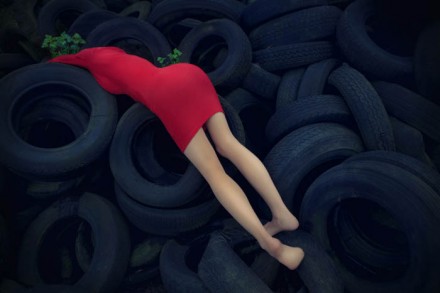
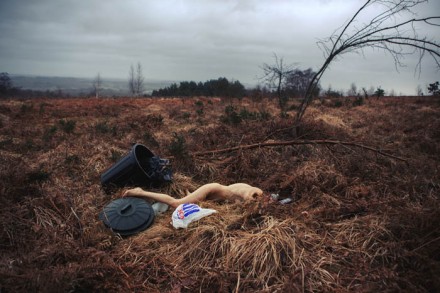
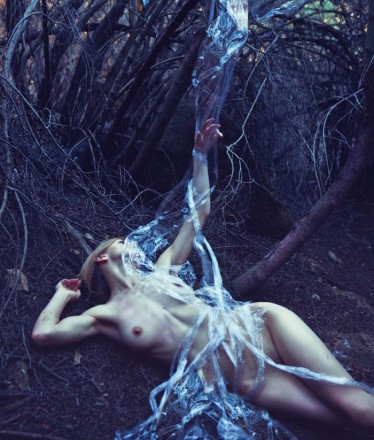
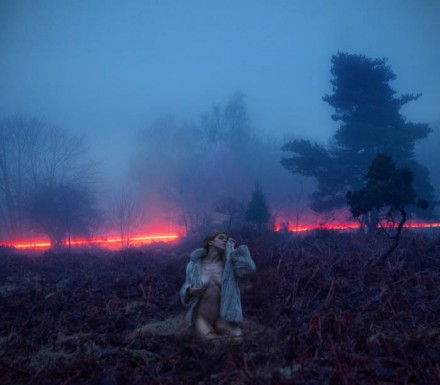
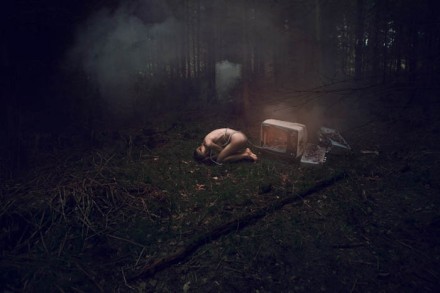
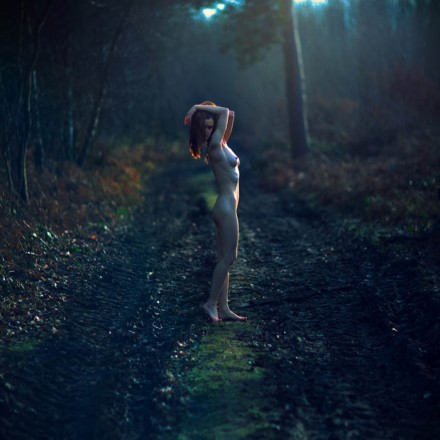
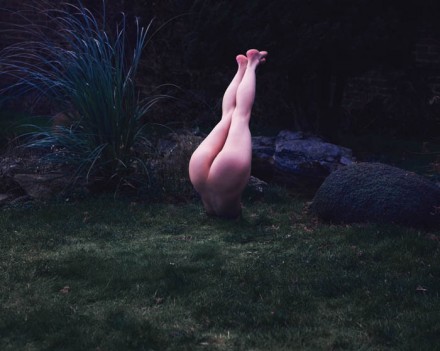
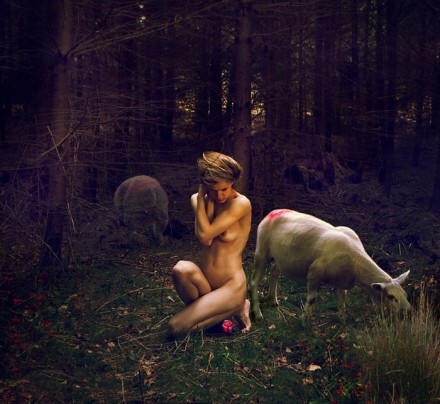
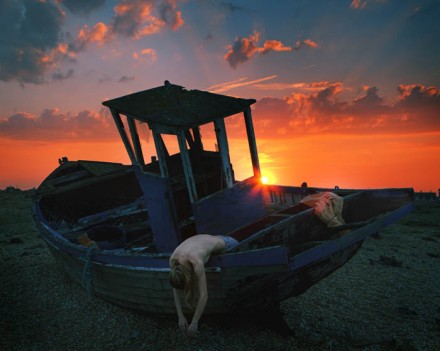
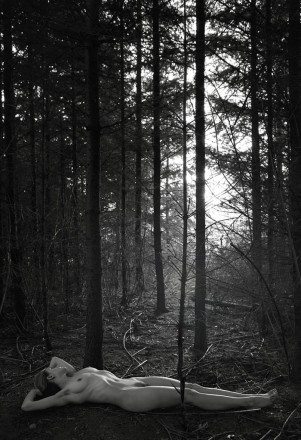
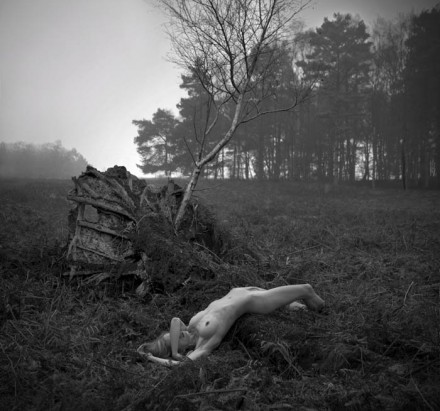
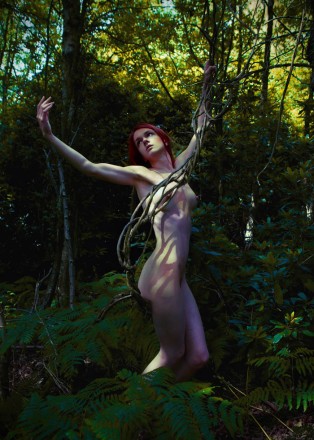
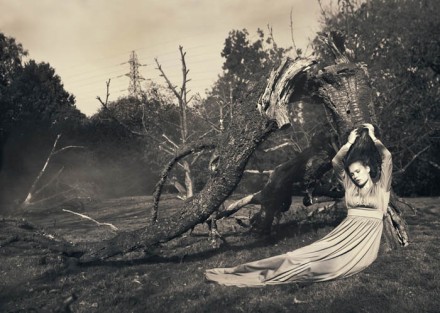
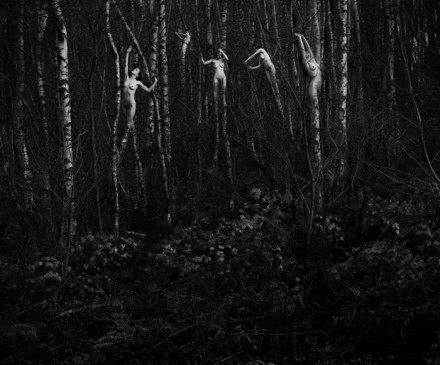
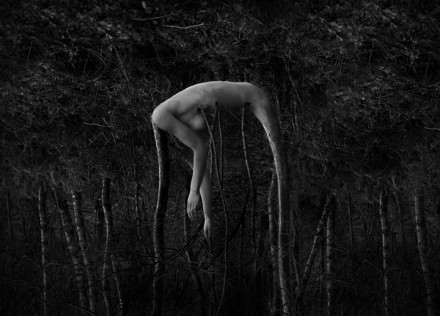
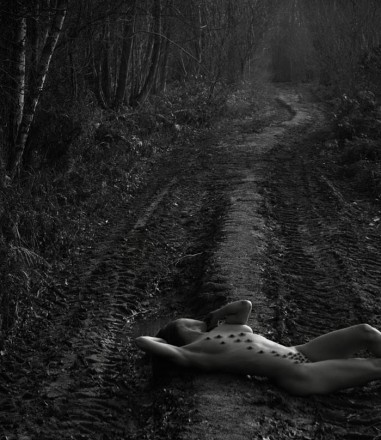
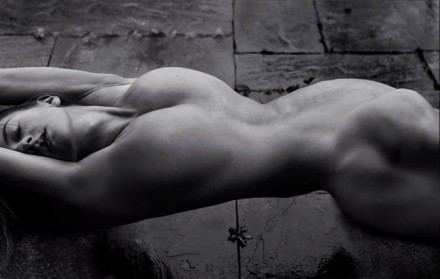
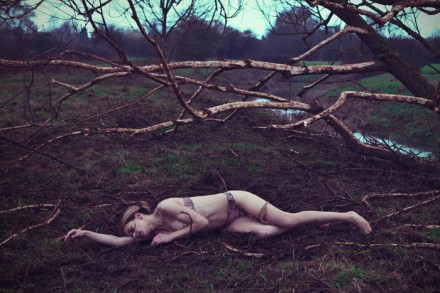
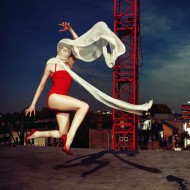
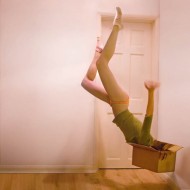
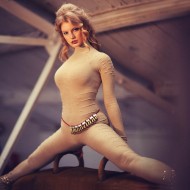
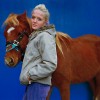
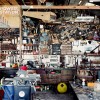
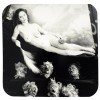
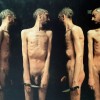
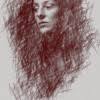
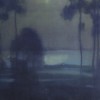
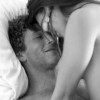
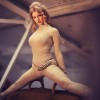
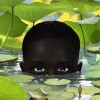
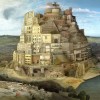
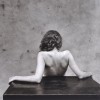
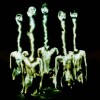
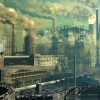
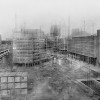
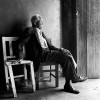
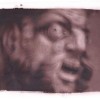
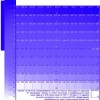
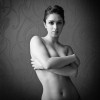
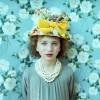
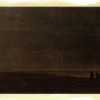
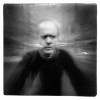
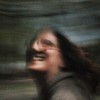
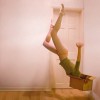
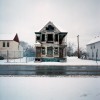
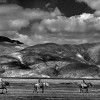
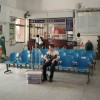
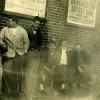
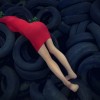

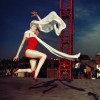
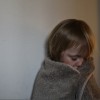
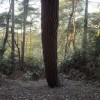
You can also subscribe to this post comments RSS feed.